Bears are some of the most intriguing animals on the planet. But many people know so little about them. Here are some amazing bear facts we thought you should know.
From the huge but cute polar bears to the small black bears, these animals are just amazing. Their habitats spread all over the planet, from the icy Arctic to the lush Asian forests, and are some of the most secretive animals around.
Generally, bears are divided into eight main categories, with some categories having various sub-species. Bears mostly exhibit many similar traits, although they also differ in many others, such as size, habitats, and diets.
While these animals look fluffy and cute, you should note that they’re among the most dangerous animals in the wild. In fact, a wrong encounter with these epic hunters can prove fatal. So, unless it’s on a protected zoo, never try to approach them in their natural habitats.
North America is home to three main bear species. These are the polar bears, brown bears (including the grizzlies), and black bears. Each of these species differs from the other in several ways.
How Do Different Bear Species Live?
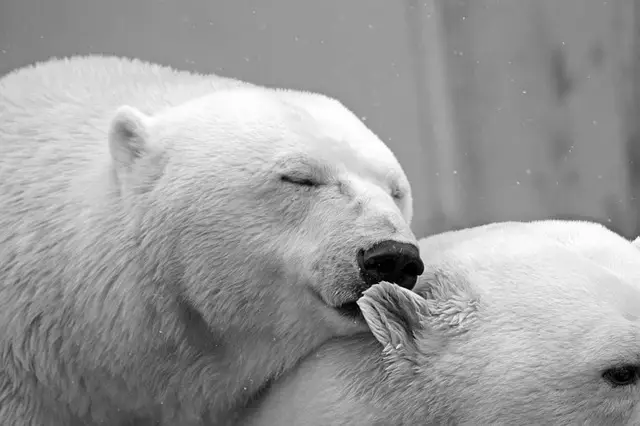
As I said earlier, different bear species share some common traits but, they are also unique in several other ways. The first major difference is in their diets and in where they live. While all bear species fall under order Carnivora, they are essentially omnivores.
Their diets range from plants, fish, insects, and animals. And, while around 90% of what they consume is plant foods, protein and fat are also quite important. That’s why meat and fish become a vital part of their diet.
Let’s compare two main species of bear and see how their lives are.
Difference Between Polar and Grizzlies
While these two species are so closely related genetically, they have adapted to different habitats, allowing them to lead different lives.
Grizzly bears, for instance, live in forests, prairies, woodlands, and alpine meadows. In North America alone, around 55,000 grizzly bears are living in the wild.
When it comes to feeding habits, grizzlies are quite adaptable and can feed on anything, including grass, flowering plants, roots, berries, carrion, fish, meat, etc.
Another interesting fact about Grizzly bears is they can give birth to up to four cubs, but in most cases, they get two. Mothers stay with the cubs for around 2 to 3 years until the cubs can now live independently.
On the other hand, polar bears have adapted to living in extremely cold areas. This includes Greenland, Northern Alaska, Canada, and the arctic.
In terms of feeding, they rely almost solely on marine food, including fish and seals. They can, however, hunt small animals, birds and sometimes eat vegetation.
A polar bear gives birth to two cubs, almost always. This helps increase these animals’ survival rate, with at least one cub expected to reach maturity. The mother cares for and protects these cubs for at least 30 months before they can start living the usual solitary life.
So, do these two animals hibernate?
The answer is yes! Both bear species do go into a period of long sleep for a few months. But, for the grizzlies, the period is known as torpor. This is because they can wake up at any time when necessary.
During hibernation, an animal will not wake up until winter is over, even when disturbed. For polar bears, only the females hibernate.
Top Bear Facts You Didn’t Know
Today, we explore the world of bears to try and discover what the animals are all about. What makes them unique and different?
Main Grizzly Bear Facts
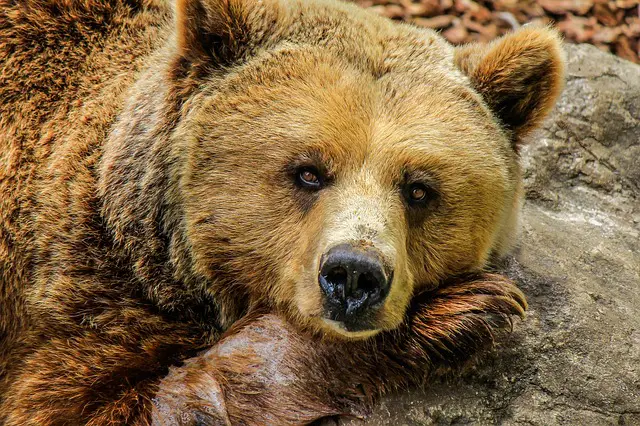
- Grizzly bears give birth to 1 to 4 cubs, which they protect for at least 3 years.
- Adult grizzly bear’s claws can grow up to 4-inches. That’s one reason you should avoid provoking these guys at all costs.
- Their scientific name is Ursus arctos horribilis.
- While they are usually solitary animals, mothers and cubs are always together.
- They dig up holes before winter in preparation for the torpor period. This period lasts between 3 and 4 months, but can sometimes go up to 7 months.
- While they are one of the apex predators, grizzly bears’ main diet includes nuts, fruit, leaves, berries, and roots. However, they, on occasions, hunt small animals and rodents.
- The animals can live for up to 25 years in the wild.
- They can grow as heavy as 800 pounds and as long as 5-8 feet.
- Grizzly bears are what we refer to as North American brown bears and are among the largest populations of bears living in North America.
- Grizzlies have a hump protruding up their shoulders, which is pure muscle. It is crucial during running and digging.
More Fun Facts about Grizzly Bears
- If grizzly and polar bears mate, which they sometimes do, the resultant offspring is known as “prizzly or grolar” bears. In other words, these are hybrids.
- During hibernation, the bear absorbs and recycles its urine into a protein that helps preserve its muscle mass.
- Moths are one of the grizzly bear’s favorite meals.
- They are not true hibernators, as we usually think. Instead, they enter into a state called torpor, which, although almost similar to hibernation, they can easily wake up when need be.
- Grizzlies communicate through movements, sounds, and smell.
Polar Bear Facts You Didn’t Know
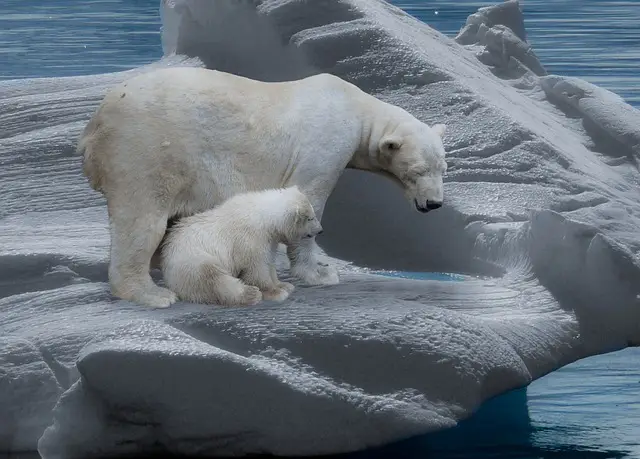
- Polar bears also go by their scientific name, Ursus maritimus, which simply means marine bear.
- Polar bears are actually not white as we know them. They have a clear coating that reflects the white snow, making them appear white. However, their body color is black.
- These bears top the list of the largest carnivores in the world. Males can grow even up to 1,500 pounds and around 9 feet high on the shoulders.
- Polar bears usually give birth to twins. Yes! This helps increase their survival rate in the ever-cold habitat.
- This apex predator can smell prey or fish even a kilometer away. And, the fish can’t hide even under the ice.
- Polar bear hybrids “prizzly” are real. It happens when they mate with grizzly bears.
- One of the fun facts about polar bears is that they’ve never met their snow buddies, the penguins. This is because polar bears live in the arctic, while penguins are only found in the Antarctic.
- Polar bear noses warm up the air as they breathe it in.
- Three things keep this bear warm; its thick skin, a thick layer of underfur, and outer guard hairs, which usually grow up to 15 cm long.
- They are extremely patient animals. They use this skill when hunting, where they can wait beside a breathing hole on the ice for hours.
- Polar bears are extremely good swimmers, reaching speeds of up to 10 km/h
Baby Polar Bear Facts
- Polar bear cubs are born after an 8 months gestation period. The gestation period also includes the delayed egg implantation period.
- One of the fun facts about polar bear cubs is that they are born with their eyes closed. However, they open their eyes during the first month.
- At birth, the cubs are between 454 and 680 g
- Female polar bear cubs are usually born smaller than males.
- The bear cubs look almost hairless at birth, as their fur is quite fine at this time.
- The cubs start walking at around 2 months of age.
- They stay with their mother for even up to 30 months.
Interesting Facts about Black Bears
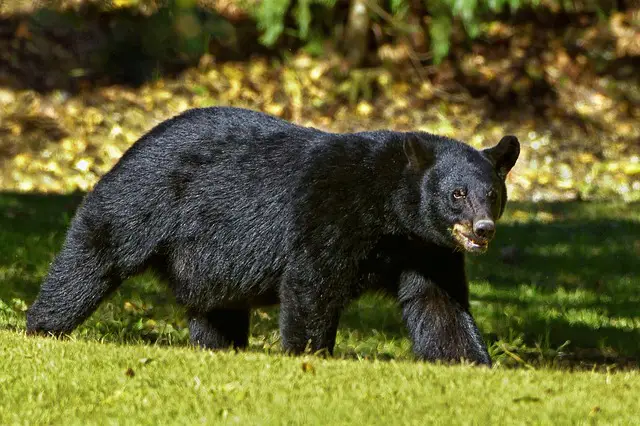
- While they are called black bears, these animals can also have brown, blonde, or cinnamon coats.
- Black bears are the smallest bear species in North America. The males can grow up to 600 pounds, while the females only reach around 200 pounds.
- They are among the only two bear species not facing the threat of global extinction.
- These bears mark trees with their teeth and claws to communicate with each other.
- They are omnivores, although about 90 percent of what they eat comprises plants.
- Black bears enter the hyperphagia (excessive eating) period near the end of summer. This helps them gain enough bodyweight to survive during the winter hibernation.
- While mating for black bears occurs between May and June, egg implantation is not until fall.
- Black bear’s scientific name is Ursus Americanus.
- They can live for up to 20 years in the wild.
- They stand about 2-3 feet, shoulder height, and 4-7 feet long, nose to tail length.
See Related: What Attracts Bears?
Black Bear Cub Facts
- The cubs are usually born in January, weighing around 8 ounces. However, they grow pretty fast and can weigh around 80 pounds by the time they hit one year.
- The cubs are born blind, covered with extremely fine fur.
- Black bear cubs live under their mother’s protection for at least 18 months before going their own way.
- Throughout summer and fall, the cubs live on their mother’s milk until spring, when they come out of the dens and start sampling adult bear food.
See Related: Three-Letter Animals You’ve Probably Never Heard Of
Asiatic Black Bear Facts
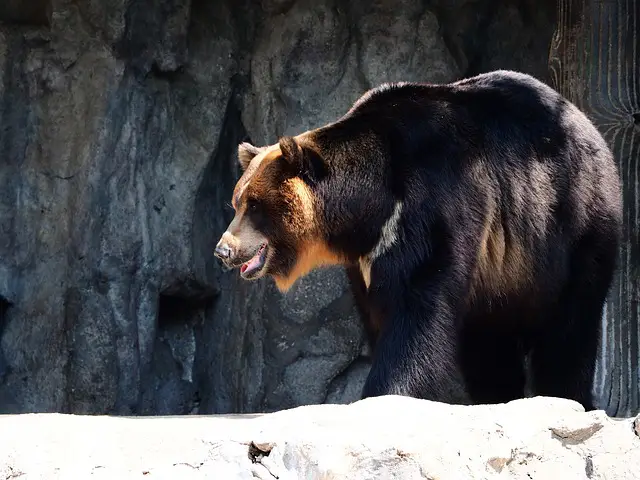
These are medium-sized types of bears originating from the southern and central parts of Asia. Usually, Asiatic black bears live in deciduous tropical and subtropical forests. And, they go by several names, such as the Moon bear, Tibetan bear, or Himalayan bear, depending on their habitats.
Other interesting Moon bear facts include:
- During summer, these bears spend their time in forested areas (hills and mountains of up to 11,800 feet).
- In winter, they come down to areas reaching around 5,000 feet, where they spend much of their time sleeping in dens.
- An adult male can weigh up to 440 pounds, while the largest female can only reach up to 310 pounds.
- They are covered with smooth black fur, with a small white or badge V-shaped patch running across its neck.
- These bears have large ears, usually placed further apart, compared to those of the American black bear.
- While young, these bears can spend a lot of their time in trees. However, when they grow bigger, they become too heavy to maintain that behavior.
- They are quite fast, reaching speeds of up to 25 mph.
- Asiatic black bears are most famous for walking on two legs. They can maintain an upright posture for even a quarter mile or more.
Koala Bear Facts
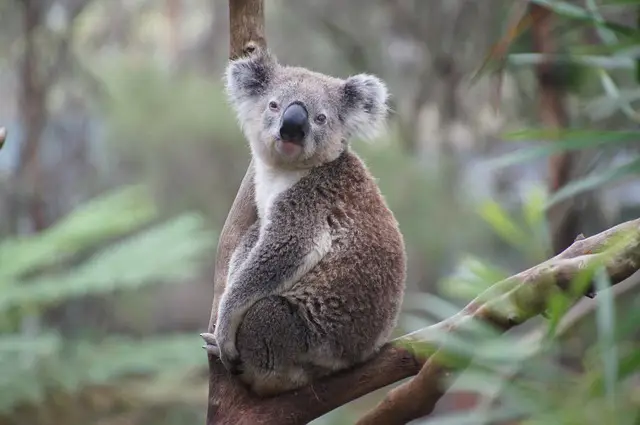
Despite being called koala bears, these animals are not typical bears. In fact, these iconic Australian natives are marsupials. They are like kangaroos, which have a pouch on their underbelly for offspring development.
Their habitats include the eastern and southeastern Australian eucalyptus forests. Some fun facts about koala bears include:
- Koalas are undoubtedly fussy eaters. They survive solely on eucalyptus leaves and can consume about a kilogram each day. Their specialized digestive system allows them to detoxify the poisonous chemicals contained in these leaves.
- The funny thing about these animals is that they eat almost all the time. If they are not eating, they are sleeping, and vice versa.
- Both their feet and hands are adapted to tree climbing. Their hands contain two opposing fingers.
- Koalas feet have two fused toes, which they mainly use for combing their fur.
- These animals can sleep three-quarters of the day (about 18 hours). This helps them conserve energy, owing to the fact that eucalyptus leaves contain pretty low nutrient levels.
- Koala bears use their butts for support up there on the tall trees.
See related: 7 Reasons Why is Biodiversity Important to Ecosystems
Bear Hibernation Facts
There are several fun facts about bears and hibernation. Some of these include:
- In days leading to winter, bears consume a lot of food (around 20,000 calories daily). This helps them to gain enough weight, to sustain themselves throughout winter.
- Even after mating, the fertilized egg’s implantation is delayed until the bear has gained enough fat before winter hibernation. Otherwise, it automatically aborts.
- While bear cubs are born during hibernation in winter, they stay in the dens until spring.
- The heartbeat of a bear goes as low as 8 beats a minute during hibernation.
- Bears will hibernate in holes they dig in various locations, especially under big rocks or logs.
- During hibernation, bears don’t drink, eat or even defecate. They recycle their urine in the form of protein.
